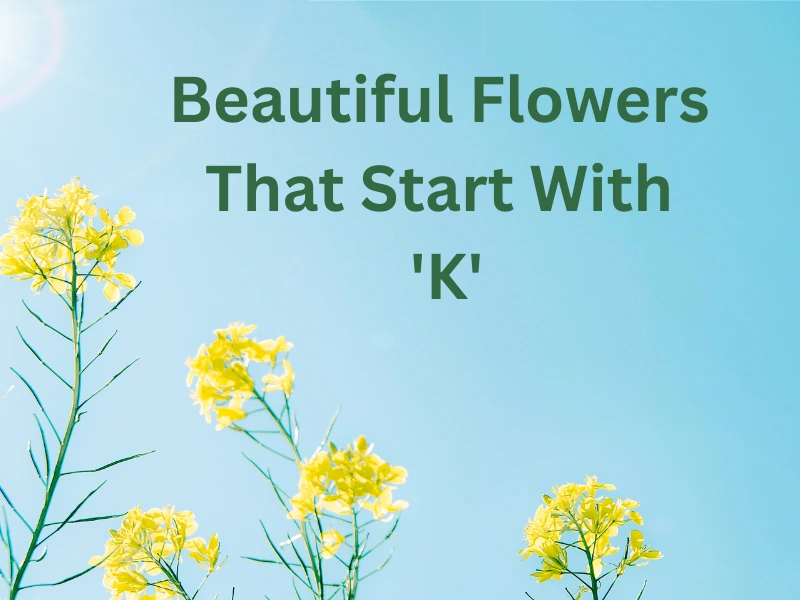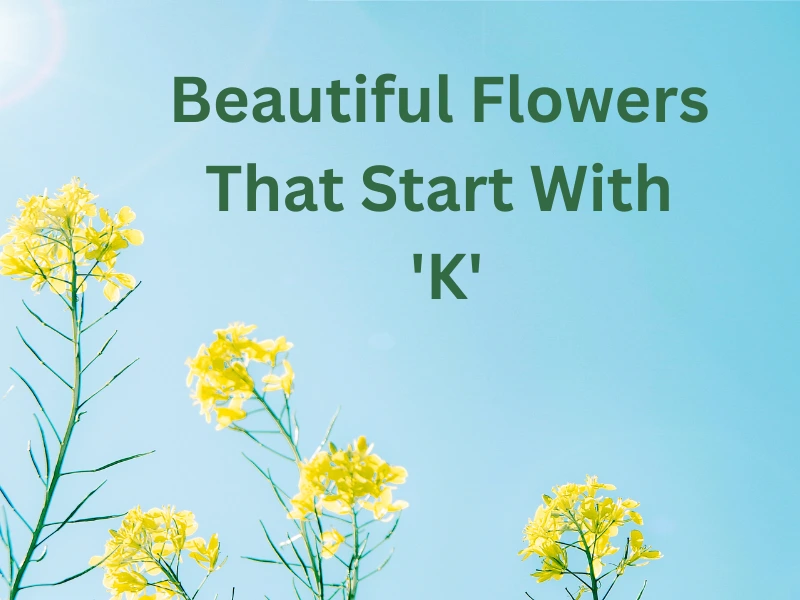
Introduction
Flowers have long been celebrated for their stunning beauty and symbolic meanings in cultures worldwide. From romantic gestures to expressing sympathy, flowers play a vital role in human emotions and connections. In this article, we will delve into the world of beautiful flowers that start with the letter “K,” exploring their unique characteristics, ideal growing conditions, and cultural significance.
Kalanchoe
Kicking off our journey is the vibrant Kalanchoe, a popular flowering succulent that adds a burst of color to any space. Known for its resilience and low-maintenance nature, Kalanchoe blooms in a variety of hues, including red, pink, orange, and yellow. These delightful flowers are easy to care for and can thrive both indoors and outdoors, making them a favorite among gardeners and plant enthusiasts.
Kaffir Lily (Clivia)
With its majestic and elegant appearance, the Kaffir Lily, also known as Clivia, captivates hearts with its striking orange or red flowers. Native to South Africa, this beautiful flowering plant requires indirect sunlight and well-draining soil to flourish. Often used as a decorative houseplant, the Kaffir Lily brings a touch of exotic beauty to any indoor setting.
Kangaroo Paw (Anigozanthos)
Hailing from the land down under, Kangaroo Paw is a remarkable plant that derives its name from the unique shape of its flowers, resembling a kangaroo’s paw. Native to Australia, these captivating blooms come in an array of colors, including red, yellow, orange, and green. Kangaroo Paw thrives in a Mediterranean climate and well-draining soil, making it an excellent choice for gardens with a flair for the extraordinary.
Kalmia (Mountain Laurel)
Graceful and charming, Kalmia, commonly known as Mountain Laurel, showcases its beauty with delicate flowers ranging in color from white to pink. Native to the eastern regions of North America, this shrub requires acidic soil and moderate sunlight to bloom to its full potential. However, it’s essential to handle Kalmia with care, as all parts of the plant are toxic if ingested.
Kniphofia (Red Hot Poker)
If you’re looking for a flower that’s sure to make a statement in your garden, the Kniphofia, or Red Hot Poker, fits the bill. This eye-catching plant boasts tall spikes of tubular flowers in fiery shades of red, orange, and yellow, adding drama and flair to any landscape. Native to Africa, the Kniphofia thrives in well-draining soil and requires plenty of sunlight to bloom brilliantly.
Kerria Japonica (Japanese Kerria)
The Kerria Japonica, or Japanese Kerria, is a delightful deciduous shrub that enchants with its cheerful yellow blooms. This hardy plant is well-suited for landscaping, offering versatility in various garden styles. With its ability to tolerate different soil types and climates, the Japanese Kerria is a low-maintenance option for gardeners seeking a touch of brightness in their outdoor spaces.
Kolkwitzia (Beautybush)
The Kolkwitzia, often referred to as Beautybush, is a show-stopping beauty with its graceful arching branches and delicate pink blooms. Native to China, this deciduous shrub adds an air of elegance to gardens and landscapes. Low-maintenance and drought-tolerant, Kolkwitzia proves to be a delightful addition to any garden, attracting admiration from all who encounter it.
Kirengeshoma (Yellow Wax Bells)
For those seeking the subtle charm of delicate yellow bells, the Kirengeshoma, or Yellow Wax Bells, is an excellent choice. Native to Japan and Korea, this woodland perennial thrives in shady environments and moist, well-draining soil. With its unique appearance and preference for cooler climates, the Yellow Wax Bells bring a touch of serenity to shaded corners of gardens.
Knautia (Field Scabious)
Nature’s pollinator-friendly marvel, Knautia, commonly known as Field Scabious, showcases its delicate beauty in the form of charming, lavender-blue flowers. These wildflowers play a crucial role in supporting biodiversity by attracting bees, butterflies, and other pollinators. Ideal for cottage-style gardens, Knautia is easy to grow and requires minimal maintenance, making it a delightful addition to eco-friendly landscapes.
Kigelia (Sausage Tree)
From Africa comes the extraordinary Kigelia, also known as the Sausage Tree, renowned for its large, sausage-shaped fruits. Though the flowers are a sight to behold, the primary attraction lies in the fascinating fruit that can grow up to a meter in length. Rich in cultural significance, the Kigelia tree has been used in various traditional remedies across its native regions.
Kaempferia (Peacock Ginger)
Transporting us to the tropics, the Kaempferia, or Peacock Ginger, wows with its peacock-like patterns and vibrant colors. This exotic flowering plant is not only a feast for the eyes but also serves as a medicinal herb with various health benefits. Native to Southeast Asia, the Kaempferia thrives in warm and humid conditions, making it an ideal addition to tropical-style gardens.
Koromiko (Hebe)
Small but stunning, Koromiko, or Hebe, enchants with its tiny yet colorful flowers that bloom in a profusion of shades. Originating from New Zealand, this evergreen shrub offers hardiness and resilience, making it a popular choice for landscaping. With its ability to thrive in diverse climates and soil types, Koromiko adds a splash of color to gardens year-round.
Knapweed
In the untamed beauty of meadows and grasslands, Knapweed flourishes with its wild, star-shaped flowers. This hardy and drought-tolerant plant plays an essential role in supporting local wildlife and biodiversity. Its effortless beauty and ability to thrive in less favorable conditions make Knapweed a valuable addition to naturalistic landscapes.
Conclusion
In this exploration of beautiful flowers that start with “K,” we have marveled at the unique and captivating blooms that nature has to offer. From the vibrant hues of Kalanchoe to the wild charm of Knapweed, each flower brings its distinct beauty and character to the world of flora. As we appreciate and cherish these remarkable creations, let us be inspired to cultivate and nurture the wonders of nature in our own gardens and spaces.
FAQs
1. Can I grow Kalanchoe indoors?
- Yes, Kalanchoe is well-suited for indoor cultivation, provided it receives adequate sunlight and well-draining soil.
2. How often should I water the Kaffir Lily?
- Kaffir Lily prefers moderate watering, allowing the soil to dry slightly between waterings.
3. Is the Sausage Tree suitable for small gardens?
- No, the Sausage Tree (Kigelia) is a large tree and may not be suitable for small spaces.
4. Are Knautia flowers attractive to pollinators?
- Yes, Knautia, or Field Scabious, is a pollinator-friendly plant, attracting bees and butterflies to the garden.
5. Can I grow Hebe in colder climates?
- Some Hebe species are more tolerant of colder climates, but it’s best to choose hardy varieties and provide winter protection when necessary.


